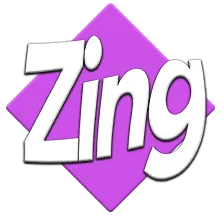
The Road and other Blogging Adventures

Enhancing Employee Productivity: How AI and Automation Boost SMB Workforce Efficiency
Enhancing Employee Productivity: How AI and Automation Boost SMB Workforce Efficiency
For small and medium businesses (SMBs), employee productivity is critical to success. However, juggling multiple tasks, limited resources, and growing demands can strain even the most dedicated teams. AI and automation offer a solution by streamlining workflows, automating repetitive tasks, and optimizing resource allocation, allowing employees to focus on high-value work. By integrating AI-driven tools into daily operations, SMBs can boost workforce efficiency, reduce burnout, and create a more productive work environment. This chapter explores how AI and automation can help SMBs unlock the full potential of their workforce.
Key Points:
Automating Routine and Repetitive Tasks
Many employees spend a significant amount of time on repetitive tasks that can be automated with AI, freeing them to focus on more strategic and creative work.
Use AI-driven tools to automate tasks such as data entry, scheduling, report generation, and file organization.
Implement workflow automation to streamline multi-step processes, reducing the time spent on administrative tasks.
AI-Powered Task Management and Prioritization
AI can help employees manage their workload more effectively by prioritizing tasks based on deadlines, urgency, and impact, ensuring that high-value activities get the attention they deserve.
Use AI tools to track deadlines, task dependencies, and project timelines, automatically prioritizing tasks and sending reminders.
Implement AI-powered task management systems that help employees stay organized and focused on the most important work.
Optimizing Team Collaboration and Communication
AI and automation can improve team collaboration by streamlining communication, centralizing project information, and automating updates or follow-ups, reducing the need for manual coordination.
Use AI-powered collaboration tools to automate meeting scheduling, document sharing, and project updates, ensuring that teams stay aligned and on track.
Leverage AI-driven chatbots to provide instant answers to common questions, reducing email overload and unnecessary meetings.
AI-Driven Time Tracking and Performance Insights
Automating time tracking and analyzing employee performance data helps businesses identify productivity bottlenecks and optimize workflows to increase efficiency.
Use AI tools to track how employees spend their time, providing insights into which tasks or projects consume the most resources.
Implement AI-powered performance tracking systems that offer real-time feedback and suggest improvements to optimize employee productivity.
Real-World Examples:
Automating Repetitive Tasks for a Marketing Agency
A small marketing agency implemented AI-driven workflow automation to handle routine tasks such as sending reports, scheduling social media posts, and tracking campaign performance. By automating these processes, the agency reduced time spent on administrative tasks by 30% and allowed employees to focus on creative projects.
AI-Powered Task Management for a Software Company
A software development firm used an AI-powered task management system to prioritize project tasks based on deadlines and client needs. The system automatically assigned tasks to team members based on their availability and skill set, reducing project delays and improving team efficiency.
In-Depth Analysis:
Automating Routine and Repetitive Tasks
Repetitive tasks such as data entry, scheduling, and report generation are often time-consuming and can lead to employee burnout. AI-powered tools like Zapier, Automate.io, or Integromat can automate these tasks, freeing employees to focus on more valuable work. For example, instead of manually updating spreadsheets with sales data, an AI system can automatically pull the data from various sources and update the documents in real time.
In addition to automating individual tasks, AI can streamline entire workflows by automating multi-step processes. For instance, if a business has a recurring task, such as onboarding new clients, AI can automate steps like sending welcome emails, scheduling follow-up meetings, and generating onboarding documents. By reducing the need for manual intervention, these automations save time and reduce the risk of errors.
AI-Powered Task Management and Prioritization
Managing a growing to-do list can be overwhelming for employees, especially when it’s difficult to determine which tasks should take priority. AI-powered task management tools like Monday.com, Asana, or Trello can help employees prioritize their workload by analyzing deadlines, task dependencies, and project timelines. These tools use AI to ensure that urgent tasks are completed first and that deadlines aren’t missed.
For example, if an employee is juggling multiple projects, an AI system might recommend prioritizing tasks based on the project’s due date or the potential impact on business outcomes. The system can also send reminders and notifications to ensure that employees stay on track without the need for constant micromanagement. This not only helps employees stay organized but also ensures that critical tasks receive the attention they need.
Optimizing Team Collaboration and Communication
Collaboration is essential for team success, but coordinating meetings, sharing documents, and ensuring that everyone stays aligned can be time-consuming. AI-powered collaboration tools like Slack, Microsoft Teams, or Google Workspace automate many of the coordination tasks that slow teams down. For instance, AI tools can automatically schedule meetings based on team members’ availability, send reminders, and share relevant documents in advance.
Additionally, AI chatbots can be integrated into these collaboration platforms to answer common questions, provide project updates, or even offer reminders about upcoming deadlines. This reduces the need for back-and-forth emails or unnecessary meetings, allowing teams to focus on their work. By streamlining communication and collaboration, AI tools help teams work more efficiently and stay aligned on project goals.
AI-Driven Time Tracking and Performance Insights
Tracking how employees spend their time is essential for optimizing productivity, but manual time tracking is often inaccurate and time-consuming. AI-driven tools like Clockify, RescueTime, or Harvest automate time tracking, providing real-time data on how employees allocate their time across various tasks and projects. These systems offer insights into where time is being wasted and help identify productivity bottlenecks.
For example, if an AI tool detects that a team is spending too much time on administrative work, it might suggest automating those tasks to free up more time for high-value activities. AI-powered performance tracking systems can also analyze employee performance data, offering real-time feedback and suggesting improvements. This helps employees stay focused on their key priorities and allows managers to identify areas where additional training or support might be needed.
Practical Applications:
AI-Driven Automation for Routine Tasks
Use platforms like Zapier, Automate.io, or Integromat to automate repetitive tasks such as data entry, report generation, and scheduling, freeing employees to focus on strategic work.
AI-Powered Task Management Tools
Implement tools like Monday.com, Asana, or Trello to help employees prioritize tasks, manage workloads, and stay on track with deadlines and project goals.
Team Collaboration and Communication Solutions
Use platforms like Slack, Microsoft Teams, or Google Workspace to automate meeting scheduling, document sharing, and project updates, improving team alignment and communication.
AI-Driven Time Tracking and Performance Insights
Leverage tools like Clockify, RescueTime, or Harvest to track time, analyze productivity, and optimize employee performance with real-time feedback.
Conclusion:
AI and automation are powerful tools that help SMBs enhance employee productivity by automating repetitive tasks, streamlining collaboration, and providing data-driven insights into performance. By reducing the burden of administrative work and optimizing task management, SMBs can ensure that their teams stay focused on high-value activities that drive business success. AI-driven tools not only improve efficiency but also create a more engaging and productive work environment for employees.
Call to Action:
Ready to boost your team’s productivity with AI and automation? Start by automating routine tasks or implementing AI-powered task management tools. How could AI help your employees work more efficiently and stay focused? Share your thoughts below, or contact us to explore AI-powered productivity solutions tailored to your business!
Need a hand in your business?
Don’t Let Missed Calls Cost You Sales—Zing Business Systems Has the Solution!
Imagine never losing another potential customer because of a missed call. With Zing Business Systems, that’s now a reality. Zing seamlessly converts missed calls into text messages, ensuring you stay connected with your customers no matter where they are. Boost your customer interactions, streamline communication, and track vital data effortlessly. Enhance your customer service and supercharge your online marketing today with Zing—where missed calls are no longer a missed opportunity. Discover more at zingacp.com/home.
Start your own blog checklist:
Here is a quick checklist to get you started with you website blow. Remember imperfect action beats inaction, get started and keep publishing.
Create your blog page then add the blog element
Add the blog element to your page and select if you want compact or list view
Start planning your blog topics by Identifying what resonates with your audience. If you are stuck you can use sites like - https://answerthepublic.com/
Create an outline serves your company goals.
Write conversationally, like if you were telling a story to a friend
Pick a catchy title.
Use several media types (gif, short video, or image) to deliver your messages.
Use data to back up claims or ideas - make sure to cite all sources❗
Have a call to action and or give your audience something to walk away with.
Take 30 minutes to edit your post.
Copyright© 2025 The Missed-Call Text-Back . All Rights Reserved.


Facebook
Instagram
X
Youtube
TikTok